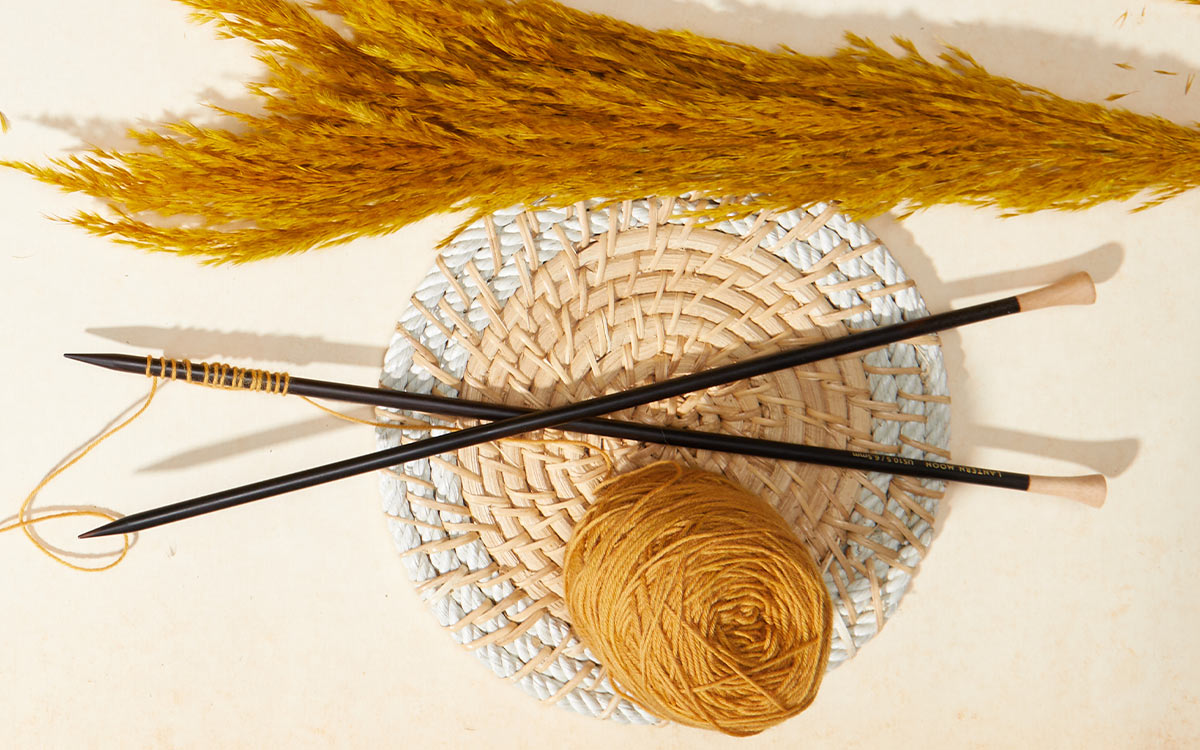
Colorwork in knitting is a captivating and versatile technique that allows you to create stunning patterns and designs by incorporating multiple colors into your projects. Whether you're a beginner or an experienced knitter, learning the techniques of knitting with colors can open up a world of creative possibilities. From a simple scarf to the widest blankets, socks, or dishcloth, colors make your knitted projects stand out. You work with regular knitting needles, accessories, and matching yarn weights. Your needle types determine how you knit the project, back and forth or in the round. From a pair of single-pointed needles for a flat pattern to a set of five double-pointed needles to knit in the round or versatile circular needles for both, you can work with any needle type for your colorwork patterns. Carrying one of the interchangeable knitting needle sets is the choice for a wide range of projects knit back and froth as well as in the round. The choice is determined by your project and your personal preferences.
In this blog, delve into the fundamentals of colorwork knitting, explore different techniques, and provide valuable tips for achieving professional results.
Getting Started with Colorwork Knitting
Colorwork knitting involves using two or more yarn colors in a single row or round to create intricate patterns, images, or textures. This technique adds depth, vibrancy, and complexity to your knitting projects, making them truly eye-catching and unique. You do not need to know special stitches other than the basic knitting skills like casting on, knit and purl stitches, bind-off, and weaving in yarn ends. Even a beginner knitter can get started with the techniques. As you advance in your craft, you expand your knitting skills to accommodate more exciting techniques.
Types of Colorwork Techniques:
1. Knitting Stripes
Stripes are the easiest way to add colors to your knitting project. You simply work with different yarn colors. Basically, you knit with one yarn for a few rows or rounds. Then, you work with another color yarn for the same number of rows or rounds. You can increase or decrease the number of rows for different sizes of stripes, too, creating exciting color effects. As you make the color changes at the start of the row or round, you can carry the yarn or snip it and weave it in.
2. Knitting Duplicate Stitches
Duplicate stitches do not require you to work with knitting needles, as this method adds color after the project is complete. Also known as Swiss Darning, it involves embroidering over existing stitches to create a colorwork effect. It is perfect for adding small details such as alphabets and motifs. Besides beauty, it plays another role of functionality, helping you fix knitting mistakes and repairing the fabric.
You can work duplicate stitches on any knitted or crocheted fabric. Just choose a finishing needle a size smaller than the knitting needle. Thread it with a contrasting shade of yarn and trace the stitches' path. Ensure that the underlying stitches are not showing, or it would spoil the effect you plan to achieve.
3. Stranded Colorwork
Stranded colorwork is the most commonly used technique. In this method, multiple colors are carried along the row, and the unused strand is stranded behind the working yarn to create a neat and even pattern. The intricate play of colors is very detailed and straightforward to work with. Check out our previous guide on tips and tricks for knitting stranded colorwork.
4. Fair Isle
Fair Isle is a unique knitting art. It is a part of the method of stranded colorwork. It came from the Shetland Islands of Scotland and is known for its geometric designs and is ideal for creating colorful motifs. Here, you work with two yarns in the same row or round.
5. Intarsia Colorwork
Intarsia involves knitting separate color sections and twisting the yarn at color changes to prevent holes. This technique is excellent for large color blocks and pictorial designs. Using bobbins or butterfly bobbins to keep the threads organized and to avoid tangling is crucial. This is particularly interesting when you have to create bold motifs.
6. Mosaic and Slip Stitch Knitting
Mosaic knitting is a relatively easy method of color knitting that results in a geometric or mosaic tile look. The mosaic technique requires you to work with two colors by slip stitch knitting a specific number of stitches per row. The mantra for the method using a light and a dark color: When working a row or round in a light color, you simply “slip” the dark stitches by transferring a dark stitch from the right to the left needle without knitting it. In the following row, you do the reverse - slip the light stitches and only knit the dark ones. The result will be an alteration of color that creates a design similar to mosaic patterning. Most often, two colors are used at a time.
7. Double Knitting
Double knitting is a technique for knitting two pieces of fabric on one needle. This is usually done using two different colors, resulting in knitted material that is twice as thick. You work with your regular knitting needles and create a pattern of Stockinette on both sides of your project in two different colors. You can also opt for a single color, but when you’ve such a unique chance, it is recommended to work with two colors.
Tips for Achieving Stunning Colorwork in Knitting Projects:
So, whether you work with stranded or mosaic colorwork methods, there are a few things to keep in mind
- Choose the Right Yarn: Opt for yarns with good color contrast and similar weights to ensure a visually appealing result.
- Practice Tension Control: Maintaining consistent tension is crucial. Practice your tension by knitting a gauge swatch first and adjusting your style. Stranded colorwork, in particular, requires even tension to avoid puckering or pulling.
- Use Stitch Markers: Stitch markers can help you keep track of pattern repeats and color changes, especially in intricate designs. They also make it easier to keep count, catch mistakes early, and maintain the rhythm of your knitting.
- Blocking Your Work: Blocking is essential to even out your stitches and enhance the appearance of your colorwork. Gently steam or wet block your finished piece to set the stitches and reveal the design's true beauty.
